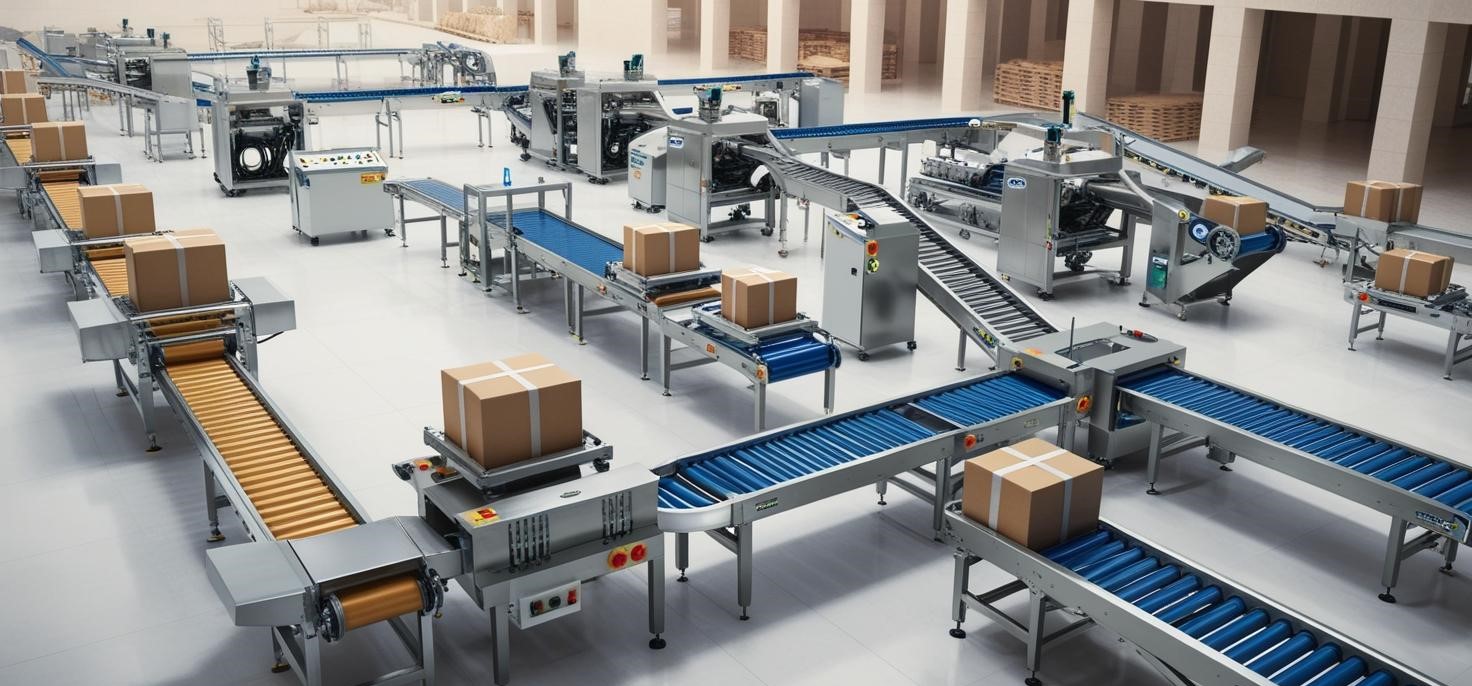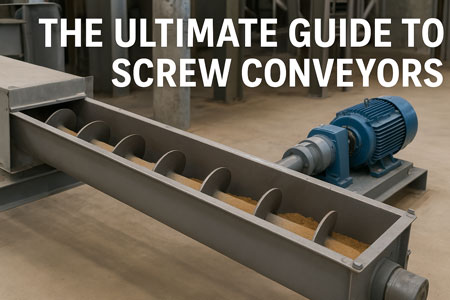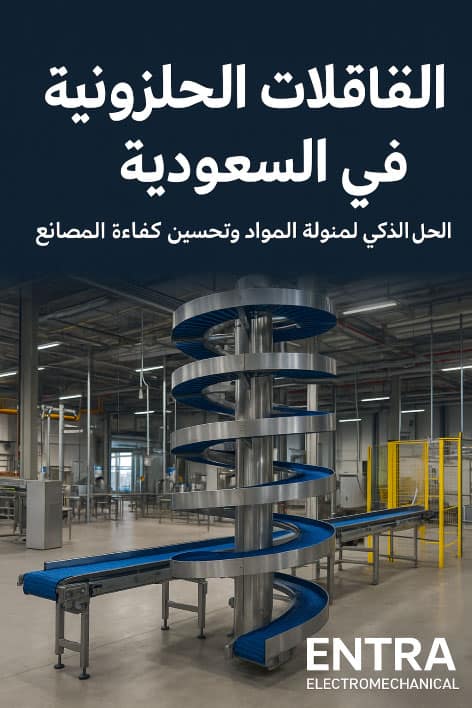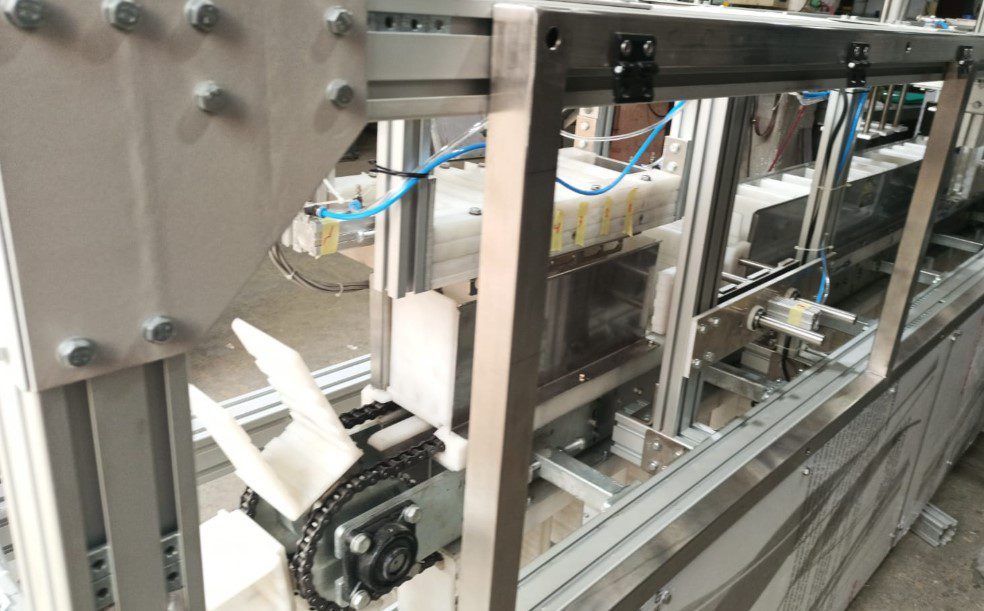
The Cost of Downtime: Why Automation Matters in 2025
July 17, 2025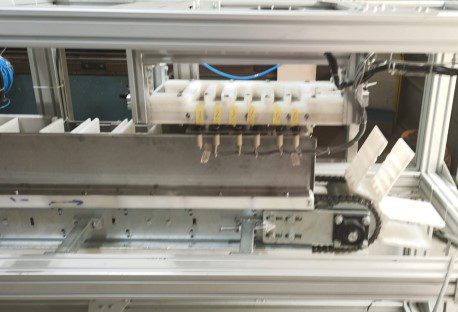
Automation Solutions in Egypt & the Middle East: Conveyor Systems, Outsourcing, and Future Trends
July 20, 2025Introduction
Material handling is a critical component of supply chain, logistics, and manufacturing operations. It encompasses the movement, storage, control, and protection of materials throughout production and distribution.
Traditionally, manual material handling (lifting, pushing, carrying) has been the norm, but advancements in material handling technology—such as automated guided vehicles (AGVs), robotic palletizers, and automated storage and retrieval systems (AS/RS)—are transforming efficiency.
This guide compares manual vs. modern material handling methods, examining productivity, safety, cost-efficiency, and scalability.
Part 1: Manual Material Handling
Common Manual Methods
-
Lifting & Carrying – Workers move goods by hand or with basic tools (e.g., carts, pallet jacks).
-
Pushing & Pulling – Manual transport of heavy loads on wheeled platforms.
-
Sorting & Packing – Hand-picking items for orders.
Advantages of Manual Handling
✔ Low upfront costs – No major investment in machinery.
✔ Flexibility – Easily adapts to changing workflows.
✔ Simple training – Minimal technical skills required.
Disadvantages of Manual Handling
❌ High injury risk – Repetitive strain, back injuries (OSHA reports 30% of warehouse injuries stem from manual handling).
❌ Bottlenecks – Slower throughput compared to automation.
❌ Labor dependency – Higher long-term staffing costs.
Impact on Productivity & Safety
-
Slower order fulfillment – Human workers average 60–100 picks per hour, vs. 200–500+ with automation.
-
Higher error rates – Manual picking errors can exceed 5%, increasing returns and waste.
Part 2: Modern Material Handling Technologies
1. Automated Guided Vehicles (AGVs) & Autonomous Mobile Robots (AMRs)
-
How they work: Self-navigating vehicles transport goods using sensors or pre-mapped routes.
-
Use case: Heavy load transport in large warehouses (e.g., Amazon’s Kiva robots).
-
Benefits:
-
24/7 operation, 30–50% faster than manual labor.
-
Reduces worker fatigue and injury risks.
-
2. Robotic Palletizers & Pick-and-Place Systems
-
How they work: Robots stack, sort, and move products with precision.
-
Use case: High-speed packaging in food & beverage industries.
-
Benefits:
-
400–800 cycles/hour vs. 100–200 manually.
-
Consistent accuracy (<0.1% error rate).
-
3. Automated Storage & Retrieval Systems (AS/RS)
-
How they work: Robotic shuttles retrieve goods from high-density storage.
-
Use case: E-commerce fulfillment centers needing rapid SKU access.
-
Benefits:
-
50–70% space savings vs. traditional shelving.
-
3–5x faster order retrieval.
-
4. IoT Sensors & Data Analytics
-
How they work: Real-time tracking of inventory, equipment health, and workflow optimization.
-
Use case: Predictive maintenance to reduce downtime.
-
Benefits:
-
15–25% productivity boost via data-driven decisions.
-
Limitations of Automation
-
High initial investment ($50K–$2M+ depending on scale).
-
Integration complexity with legacy systems.
Part 3: Manual vs. Modern—Side-by-Side Comparison
| Factor | Manual Handling | Automated Handling |
|---|---|---|
| Speed | Slow (60–100 picks/hr) | Fast (200–800+ picks/hr) |
| Accuracy | ~95% | ~99.9% |
| Safety | High injury risk | Minimal worker strain |
| Upfront Cost | Low ($0–$10K) | High ($50K–$2M+) |
| ROI Timeline | Immediate | 1–3 years |
| Scalability | Limited by labor | Easily expandable |
Real-World Example
-
Small Business: Manual handling may suffice for low-volume operations.
-
Large Warehouse: Automation (e.g., AGVs + AS/RS) can cut labor costs by 40% (MHI Report).
Part 4: Productivity Gains & ROI
Quantifying Automation Benefits
-
Throughput: 2–5x faster order processing.
-
Labor Reduction: 1 robot = 2–4 workers (Deloitte analysis).
-
Error Reduction: 90% fewer mispicks with robotics.
ROI Calculation
| Cost Factor | Manual | Automated |
|---|---|---|
| Labor (Annual) | $120,000 (4 FTEs) | $30,000 (1 overseer) |
| Error Costs | $15,000 | $1,500 |
| Payback Period | N/A | 1.5–3 years |
(Source: MHI’s Annual Industry Report)
Part 5: Implementation Roadmap
-
Needs Assessment
-
Audit workflows for bottlenecks (e.g., slowest picking zones).
-
-
Pilot Phase
-
Test AGVs or robotic arms in a controlled area.
-
-
Training & Change Management
-
Upskill workers to oversee automation.
-
-
Scaling & Integration
-
Connect systems to WMS/ERP (e.g., SAP, Oracle).
-
Part 6: Emerging Trends
-
AI-Driven Optimization: Machine learning for route planning.
-
Collaborative Robots (Cobots): Safe human-robot interaction.
-
5G & Edge Computing: Real-time data for smarter warehouses.
-
Green Material Handling: Energy-efficient automation.
Conclusion
While manual material handling is cost-effective for small operations, automated material handling systems deliver unmatched productivity, safety, and ROI at scale. A hybrid approach (partial automation) may be ideal for mid-sized businesses.
Next Steps:
-
Conduct a warehouse efficiency audit.
-
Start with a pilot automation project.
-
Leverage industry benchmarks (MHI, ISO) for best practices.
FAQ Section
1. What’s the difference between manual and automated material handling?
Manual relies on human labor, while automation uses robotics, AGVs, and software.
2. How much can an AGV improve warehouse productivity?
AGVs can boost throughput by 30–50% while reducing labor costs.
3. What’s the ROI of palletizing robots?
Typically 1–3 years, with 40–60% labor savings (Fanuc case studies).
4. Is automation feasible for small businesses?
Yes, via modular solutions like collaborative robots (cobots).
5. How does automation improve safety?
Reduces heavy lifting, repetitive strain injuries (OSHA compliance).
TL;DR – Key Takeaways
-
Automation = 2–5x faster than manual handling.
-
ROI in 1–3 years via labor/error reduction.
-
Start small with pilot programs before scaling.
Explore Further:
By integrating modern material handling technology, businesses can achieve higher efficiency, lower costs, and a competitive edge. 🚀

